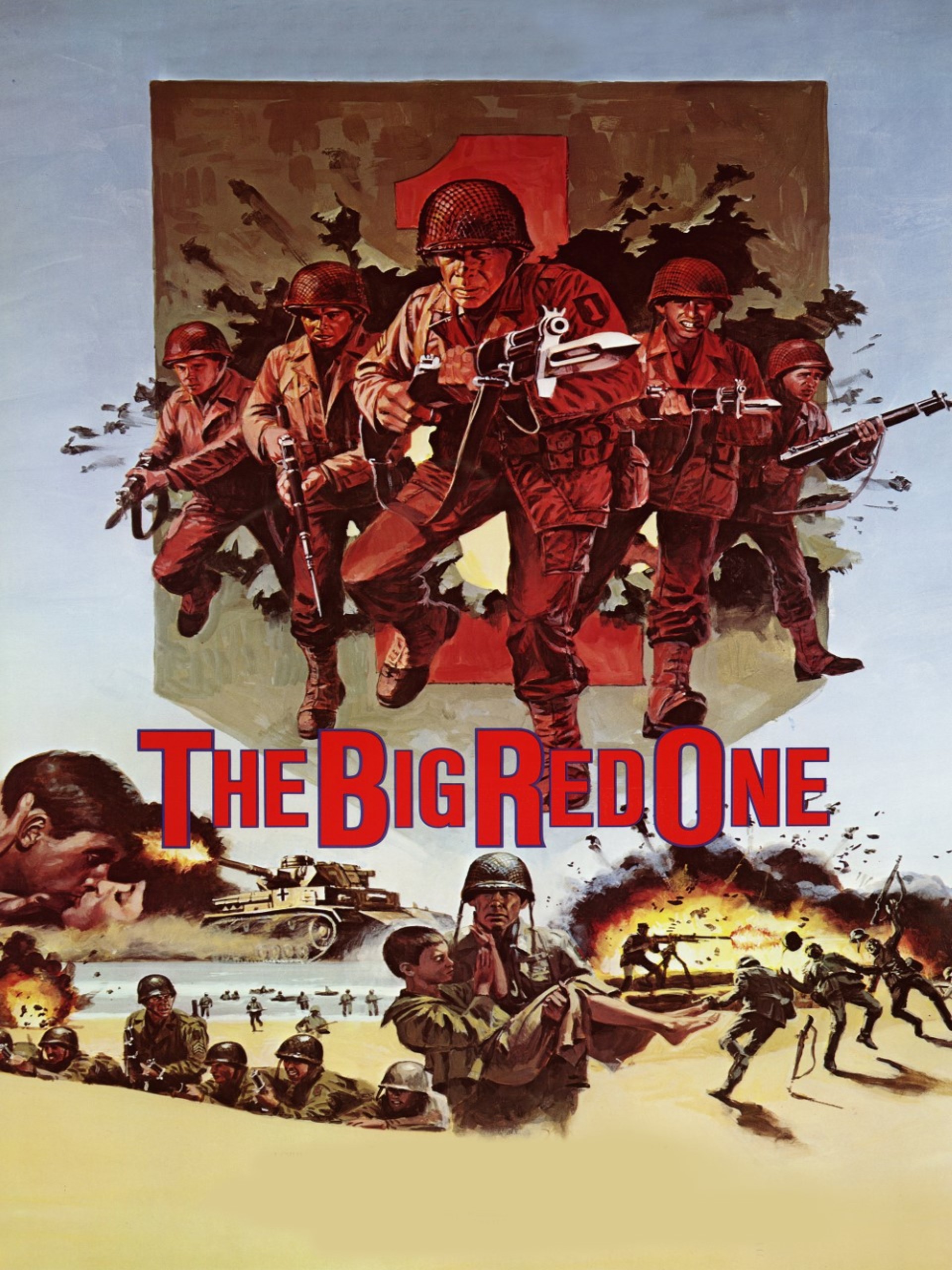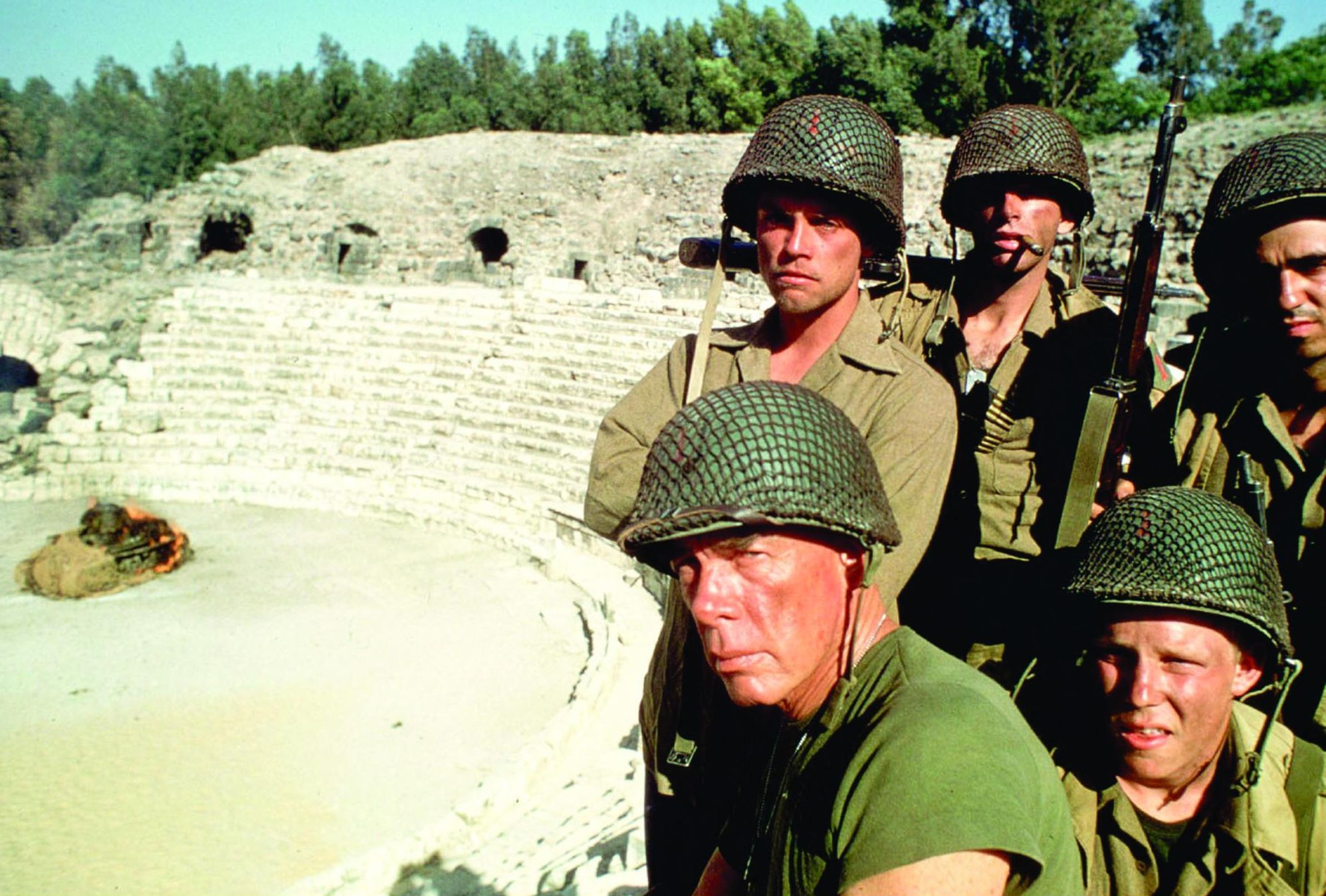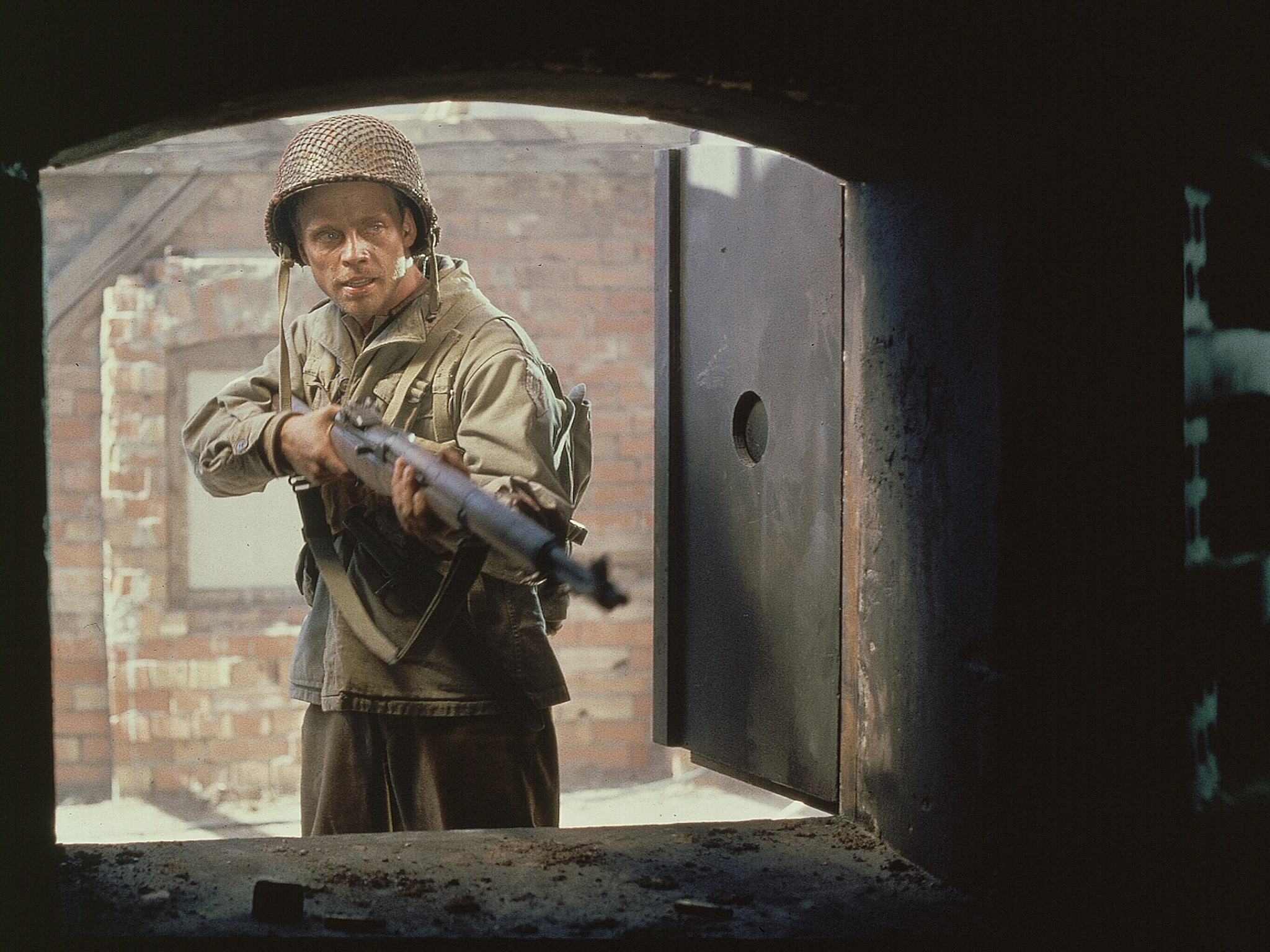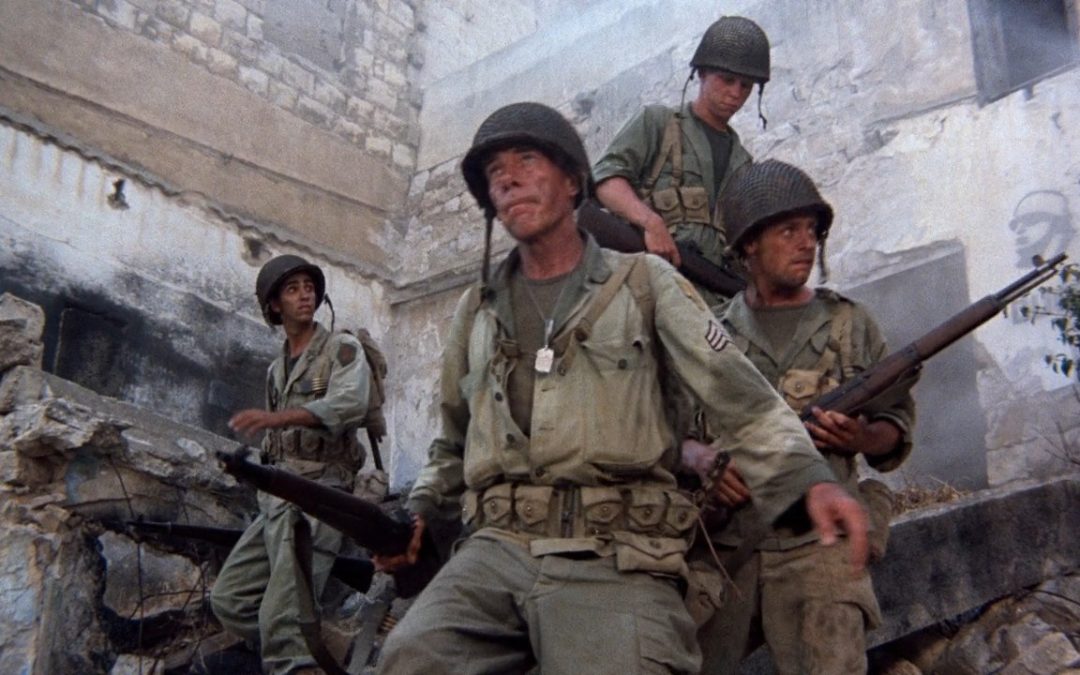The Big Red One is a World War II movie from 1980, and it seems like I never hear anyone talk about it anymore. It was made independently but has been overshadowed recently by more modern versions of World War II stories, like Saving Private Ryan.
This is a shame because it is excellent. It was written and directed by Sam Fuller, a guy who was actually in the war. Scenes are inspired by his real-life experiences.

We start out on the last day of World War I where we meet the Sergeant. He is played by Lee Marvin, another real World War II veteran. The Sarge is out in no man’s land when he kills a Kraut who is trying to surrender. He comes back to base to learn the war had ended hours ago. We then cut to World War II again and the Sarge and his squad are about to land in North Africa in the First Infantry Division, whose patch is a red 1 on an OD green background.
Here we meet the rest of the cast. Pvt. Zab is a novelist, played by Robert Carradine. Zab is also the narrator of the film and the stand-in for Fuller. Some guy named Mark Hamill plays Pvt. Griff. Bobby Di Cicco plays Pvt. Vinci, and Kelly Ward is Pvt. Johnson. The rest of the story follows the squad and their experiences from North Africa until the end of the war.

The story is mainly a sequence of vignettes that hit the high and low points of the war for the squad. We see them in the Kasserine Pass, Sicily, D-day, and on through their campaigns. During the Big Red One, we see an endless stream of replacements come and go as the four main cast members make it through more or less unscathed. It’s a little hard to explain the rhythms of the story in a compelling way but trust me, the film is excellent. It’s not just action or exploitation. You get action, but you get plenty of the realities of war from the point of view of both the soldier and civilian.
Fuller’s original vision of the Big Red One fell victim to studio cuts, like so many other great films. Even the original theatrical release is damned good. The good news is that in 2004 a full 47 minutes of cut footage was restored in The Reconstruction cut of the film.

The footage was edited back in by Peter Bogdanovich, who was friends with Fuller as Fuller did most of the uncredited writing of Targets for Bogdanovich. The Reconstruction cut is the version to watch. Both are great, but the full cut is obviously better.
Fuller went on to win the Silver Star, the Bronze Star, and the Purple Heart during his service. He was present at the liberation of the Falkenau concentration camp. Warner Bros. was interested in filming The Big Red One as early as the end of the 1950s, even sending Fuller on a trip to Europe to scout locations. It still took more than 20 years to bring to the screen.
This is an epic movie and fully deserves the highest score possible.

Check back every day for movie news and reviews at the Last Movie Outpost





